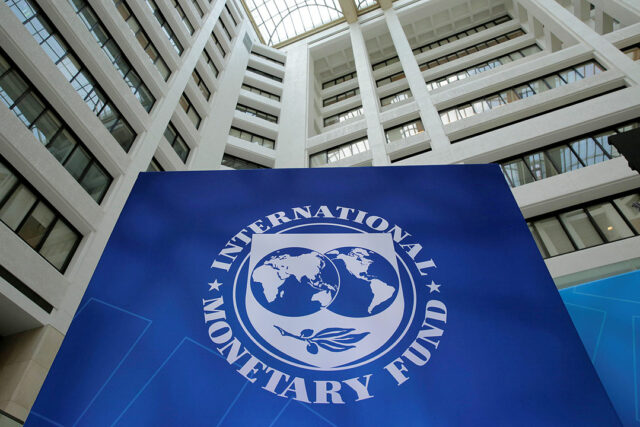To say the least, it must have been disturbing for financial markets to hear US Federal Reserve Chair Jerome Powell’s announcement that it is likely to take “longer than expected” for inflation to return to the central bank’s 2% inflation target and warrant easing monetary policy. Powell stressed they needed a stronger basis like a sustainable downtrend to the target.
It is quite obvious that the US faces a robust economy and higher-than-expected inflation, and therefore adopting a loose monetary policy sounds anachronistic. One does not slash policy rate when the US economy is expected to expand by 2.7% against an earlier forecast of 2.1%, while inflation remains high at a projected 2.9% this year, still higher than the target, to slow down to 2% only in 2025. Based on the bets of investors, the number of those who believe in only one cut this year actually climbed after the Chairman’s announcement. This contrasts sharply with the experience of the European Central Bank which is facing essentially weak economic growth and declining price pressures. Easing monetary policy is reduced to when, rather than why.
Unfortunately, that hawkish remark was enough to send the Philippine peso to a 17-month low at P57.18 to a dollar. Bangko Sentral ng Pilipinas (BSP) Governor Eli Remolona was quoted explaining that such an outcome was precisely in reaction to the US Fed’s monetary stance. A delay in policy rate cuts means the hawkish stance would remain and therefore, other currencies tend to depreciate. He assured that “…it’s not the case of a weak peso, it’s the case of a strong dollar.” As a result, we saw an increase in the US Treasury yields, a reduction in global petroleum prices, and some recovery in the local equities market.
While these are growth and inflation-positive, the peso link to inflation cannot be dismissed. A weaker peso would make consumer prices higher because imported finished and intermediate products become pricier.
This broader issue of disinflation and central bank response, particularly the US Federal Reserve, was one of several challenges identified by the International Monetary Fund (IMF) economic counsellor and director of its Research Department Pierre-Oliver Gourinchas in the April 2024 issue of the World Economic Outlook (WEO). The presentation of the WEO, as well as the Fund’s Financial Stability Report, was one of the highlights of this week’s Spring Meetings in Washington DC.
A most pleasant surprise is that the Fund found the global economy keeping its resiliency, “with growth holding steady as inflation returns to target.” Last year was by many indications an eventful journey. It was marked by supply chain disruptions after the pandemic, a Russian-initiated war on Ukraine that led to energy and food crisis worldwide and a substantial rise in inflation. Monetary policy tightening gripped the world economy.
Gourinchas echoed the key message of the WEO that the world managed to avoid a recession. The banking system demonstrated its fundamental strength. Capital flows to emerging markets remained steady. The inflation trend now points to an essential normalization. With growth for 2024 and 2025 estimated to converge to about 3.2%, and median headline inflation stabilizing from a projected 2.8% at the end of 2024 to 2.4% at the end of 2025, the Fund described the bottom-line of most indicators, and this is one of a soft landing.
Yes, there was economic scarring from the pandemic, but it was less than initially estimated. Many countries have recovered, especially the emerging markets, while the US economy “has already surged past its pre-pandemic trend.” The world economy defied warnings of stagflation and widespread recession — without question, the good news.
How did we all make it when central banks around the world were increasing the lever of monetary policy?
This — hats off to central banks — was actually on account of decisive monetary policy actions and improved monetary policy frameworks anchoring inflation expectations that helped, rather than blocked, economic growth. In the Philippines, without an appropriately tight monetary policy, inflation could have been higher and growth could have retreated due to the corrosive impact of price pressures on consumption, investment, and even public spending.
Moreover, despite some unevenness, public spending and household consumption fortified the demand components of growth and boosted labor market activities. Households in major advanced economies, according to the Fund, succeeded in drawing down substantial amounts from their own savings accumulated ostensibly during the days of the pandemic.
The WEO also attributed this favorable outcome to “changes in mortgage and housing markets over the pre-pandemic decade of low interest rates moderated the near-term impact of policy rate hikes.” Fiscal consolidation should complement the disinflation process we are seeing today but it could weigh down economic growth. Nonetheless, fiscal consolidation is essential. With this, the WEO added 0.1 percentage point (ppt) to this year’s expected economic performance relative to the January 2024 WEO, and by 0.3 ppt relative to the October 2023 WEO.
But moving ahead, the rest of 2024 and 2025 is not going to be a walk in the park. There are both risks and challenges that, if no appropriate action is taken, could spell bad news.
First, the risks to the global outlook. They are, in WEO’s assessment, balanced.
On the downside, the WEO lists down new price spikes from geo-political tensions and difference in disinflation speeds across major economies motivating currency movements and strain on the financial markets. China’s property sector could deteriorate and pull back its growth potential. Fiscal woes such as higher tax adjustments and spending cuts could precisely restrain economic activities and erode support for policy reforms in many countries. Geo-economic fragmentation could result in lower trade in goods and capital as well as movement in people.
On the upside, the WEO believes that more accommodative fiscal policy could bolster economic activities in the short run, but, over time, it might be costly to do appropriate policy reversal. Disinflation could occur faster than anticipated and this is a green light for central banks to ease monetary policy and relieve the credit markets. Generative artificial intelligence (AI) and stronger structural reforms could help advance gains in productivity.
Second, the challenges. They have to be overcome by decisive actions by both the authorities and the general civil society.
On disinflation, the trend has started but it is not definite. Some headline and core inflation rates across the Fund membership have in fact inched up. While this may be temporary, close monitoring and sustained vigilance of monetary policy are imperative.
On fiscal policy, the need is to ensure a responsible fiscal consolidation that would complement, rather than negate, the initial gains against inflation. Otherwise, there could be fiscal and financial stability risks for the world economy because funding costs may be amplified. High wage growth is also challenging anti-inflation efforts in Europe even as there is little evidence of overheating. In Asia, China’s property sector remains problematic.
On real interest rate and sovereign debt dynamics, the challenge is to reconstruct fiscal buffers. Again, a credible fiscal consolidation program could inspire lower funding costs and enhance financial stability. Doing this consistently with achieving high growth is necessary. Monetary policy accommodation can also support fiscal consolidation when inflation is more entrenched at lower, more sustainable levels.
On medium-term growth prospects, the challenge is to enhance them. They are actually below historical standards. Prospects for lower growth derive mainly from weak total factor productivity growth which in turn is due to misallocation of both labor and capital resources. Disruption in labor and financial markets remains a real risk. AI would be critical here in driving higher productivity in the medium term.
Finally, on attaining a green and climate-resilient future, enormous amounts of global investments are required. Growth is not affected by efforts to reduce emissions that continue to rise. True, the Fund argued that if subsidies on harmful fossil fuel reduction can be slashed, more resources can be made available for green investments. We believe, however, that putting the burden of adjustment on emerging and developing economies may be somewhat unfair. It will take time for this to happen unless technology transfer is made possible by more advanced economies and on concessional terms.
We agree in principle with Gourinchas’ ultimate warning that “there is little hope for progress outside multilateral frameworks and cooperation.” But the institutions promoting multilateral frameworks and cooperation, like the IMF and the World Bank, need constant restructuring. They need to reflect changed international realities like the growing importance and needs of emerging markets. They need to also address the increasing inequalities and poverty across the Fund membership. They need to realize that climate-related shocks like El Niño affect nearly all countries in a negative way, but it is the emerging markets and developing countries in this side of the Pacific that are most vulnerable. Unless these are considered, there would indeed be little hope for any significant progress.
That is the other bad news.
Diwa C. Guinigundo is the former deputy governor for the Monetary and Economics Sector, the Bangko Sentral ng Pilipinas (BSP). He served the BSP for 41 years. In 2001-2003, he was alternate executive director at the International Monetary Fund in Washington, DC. He is the senior pastor of the Fullness of Christ International Ministries in Mandaluyong.

















